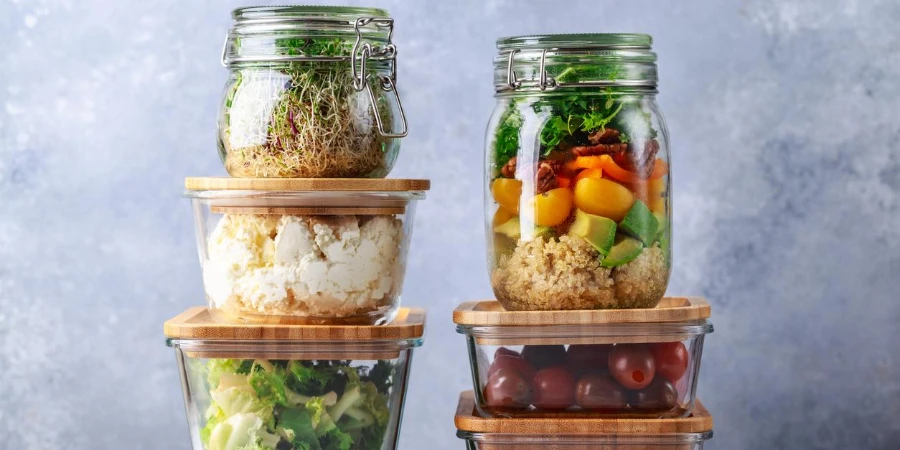In the ever-evolving landscape of kitchen essentials, food storage containers stand out as a pivotal element for maintaining the freshness and organization of food products. As 2024 approaches, the significance of choosing the appropriate containers has never been more critical. These containers not only promise to keep food items in optimal condition but also play a vital role in streamlining kitchen operations, offering a blend of practicality and efficiency. For businesses in the industry, the selection of these containers directly impacts the quality of food storage solutions provided to consumers, influencing satisfaction and loyalty. This choice resonates with the broader objective of enhancing operational efficiency and environmental sustainability, marking a significant consideration in the procurement strategies of industry professionals.
Table of Contents
1. Food storage containers: varieties and applications
2. Analyzing the 2024 market for food storage solutions
3. Criteria for selection: ensuring quality and efficiency
4. Leading food storage models of 2024: an overview
1. Food storage containers: varieties and applications
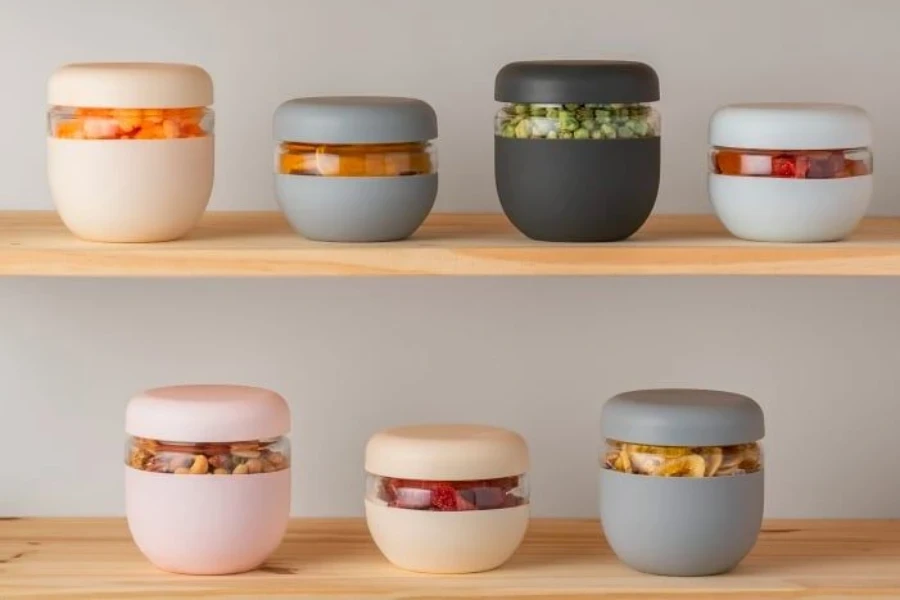
In the realm of kitchen essentials, food storage containers emerge as a crucial component for sustaining both the quality and organization of consumables. With a variety of materials available, selecting the right type becomes a pivotal decision. The debate between glass and plastic containers is longstanding, with each material offering distinct advantages and limitations.
Glass vs. plastic: a comparative analysis
Glass containers are lauded for their durability and non-porous nature, making them ideal for storing a wide array of food products without absorbing odors or stains. Their ability to transition safely from freezer to microwave to dishwasher adds a layer of convenience, notwithstanding their environmental friendliness due to recyclability. However, glass’s susceptibility to breakage and its heavier weight compared to plastic pose considerations for transport and storage.
Conversely, plastic containers offer lightweight, shatter-resistant alternatives that facilitate ease of use and mobility. Advances in manufacturing have introduced BPA-free plastics, addressing safety concerns related to chemical leach into foods. Yet, despite these improvements, plastic can still retain odors and stains, particularly from acidic or strongly colored foods. The environmental impact of plastic, albeit mitigated by recyclable options, remains a significant concern, given its contribution to global plastic waste.
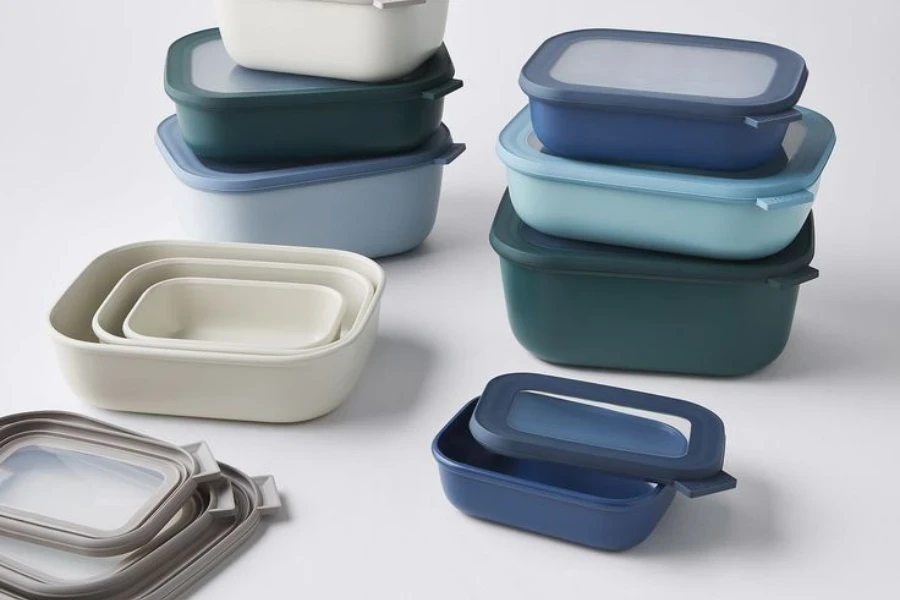
Innovative materials and environmental considerations
The quest for sustainable food storage solutions has paved the way for innovative materials, including biodegradable plastics and silicone. Biodegradable plastics, derived from renewable resources like corn starch, present a promising avenue towards reducing environmental footprint. These materials decompose more readily than traditional plastics, offering a greener alternative without sacrificing the convenience of plastic storage.
Silicone containers emerge as another eco-friendly option, heralded for their versatility and durability. Capable of withstanding extreme temperatures, silicone containers can go from freezer to microwave without issue, and their collapsible designs offer space-saving benefits. Moreover, silicone’s inert properties mean it doesn’t leach chemicals or retain odors, making it a safe choice for food storage.
The introduction of these materials signifies a shift towards more environmentally responsible consumption patterns. Industry professionals are increasingly recognizing the importance of sustainability in product selection, driven by consumer demand for eco-friendly alternatives. This trend not only influences procurement strategies but also aligns with broader environmental goals, fostering a market that values durability, safety, and sustainability in equal measure.
The selection of food storage containers, therefore, transcends mere functionality. It embodies a balance between practical considerations and environmental responsibility, guiding industry professionals in their quest to offer solutions that meet the evolving needs and values of consumers. As the market continues to innovate, the emphasis on sustainable, safe, and efficient food storage options will undoubtedly shape future trends in kitchen essentials.
2. Analyzing the 2024 market for food storage solutions
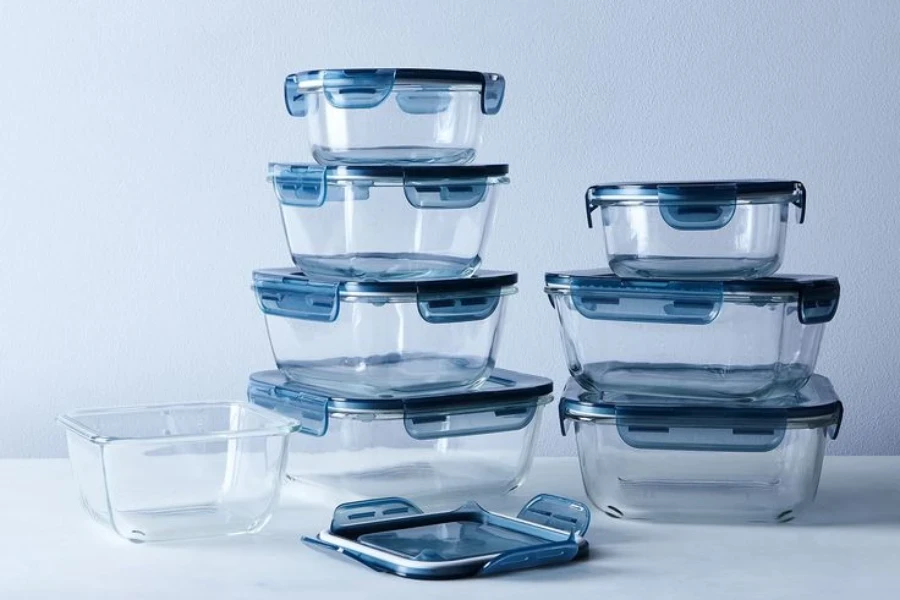
The 2024 market for food storage solutions reflects a dynamic interplay between technological innovation and shifting consumer preferences, with sustainability emerging as a central theme. As environmental awareness deepens, the industry sees a transformative shift towards more eco-friendly practices, influencing both product development and consumer choices.
The food storage container market in 2024 is witnessing significant growth and transformation, driven by evolving consumer preferences and technological advancements. With a projected compound annual growth rate (CAGR) of 3.21% from 2022 to 2027, the market is set to expand by USD 2,166.85 million, highlighting the increasing demand for innovative and sustainable food storage solutions. This growth is largely fueled by the consumer shift towards eco-friendly, durable, and contamination-preventive storage options, with glass containers seeing a heightened demand due to their odor resistance and ability to extend the shelf life of food items.
Recent advances and consumer preferences
The landscape of food storage technology has witnessed significant advancements, driven by a quest for convenience and sustainability. Innovations in material science have led to the creation of more durable, efficient, and eco-friendly food storage options. For instance, advancements in biodegradable plastics and the increased use of silicone materials respond directly to consumer demands for products that minimize environmental impact without compromising on quality or functionality. These materials not only offer improved performance in terms of food preservation but also align with a broader societal push towards sustainability.
Furthermore, the integration of smart technology into food storage solutions is reshaping consumer interactions with these products. From containers that track freshness to apps that monitor inventory and suggest recipes based on available ingredients, technology enhances the user experience, offering convenience and reducing food waste. These innovations reflect a growing preference for solutions that are not only practical but also contribute to more sustainable consumption patterns.
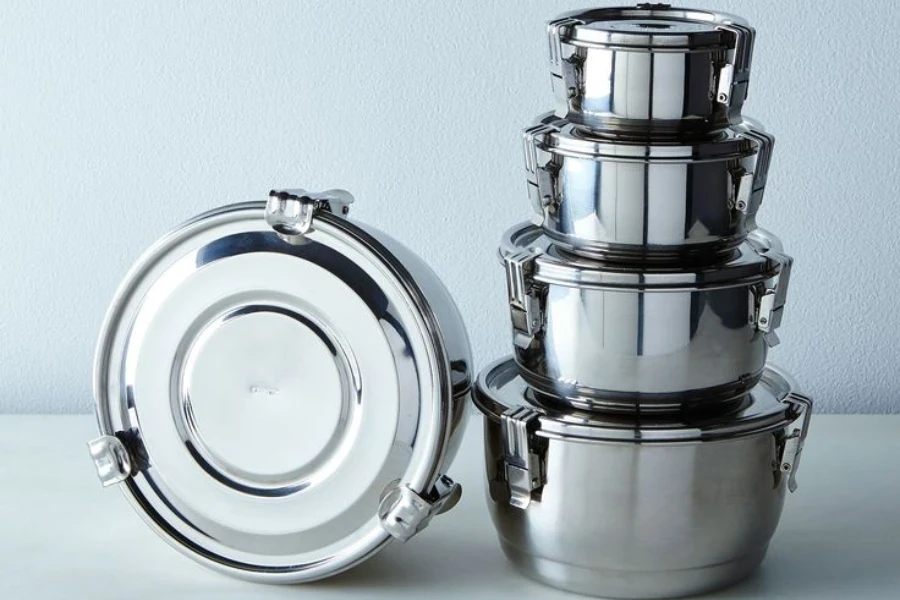
Impact of sustainability on market trends
Sustainability has become a driving force in the food storage container market, influencing both industry practices and consumer behavior. The rise of reusable and eco-friendly options is a direct response to a more environmentally conscious consumer base, which prioritizes products that contribute to reducing waste. The market has seen an increase in products made from recycled materials, as well as those designed for long-term use over disposable alternatives.
This shift towards sustainability is not merely a trend but a fundamental change in the way food storage solutions are conceived and valued. Companies that incorporate sustainable practices into their product development and business models are finding a competitive edge in a market that increasingly values environmental responsibility. The emphasis on sustainability has also spurred innovation, leading to the development of new materials and designs that reduce environmental impact while enhancing product functionality and user experience.
3. Criteria for selection: ensuring quality and efficiency
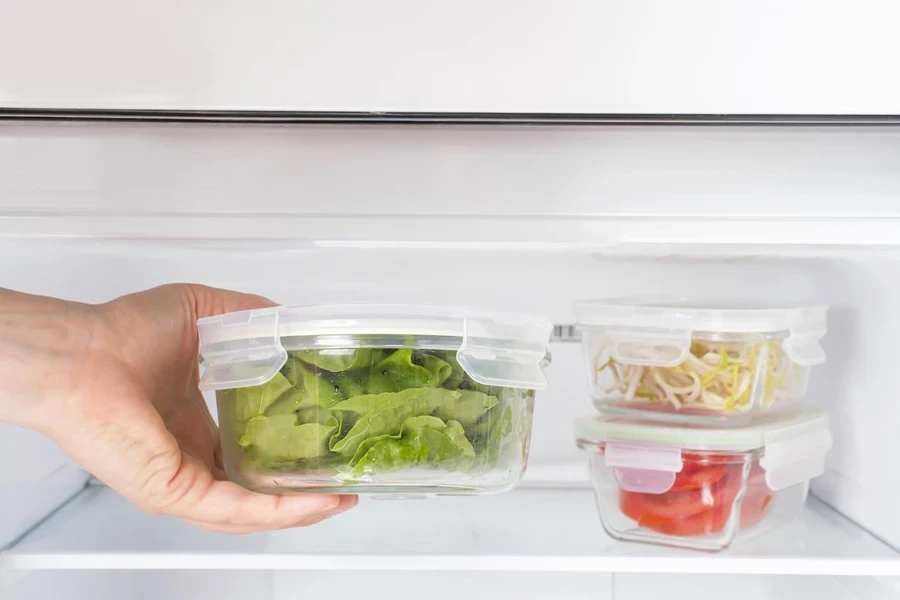
Selecting the optimal food storage containers is a critical decision that affects not only the freshness and quality of stored foods but also operational efficiency and space management within kitchen environments. This section delves into the essential criteria that should guide this selection, focusing on durability, safety, size, shape, and usability.
Assessing durability and safety features
When evaluating food storage containers, the durability and safety features stand paramount. Containers must withstand the rigors of daily use, including exposure to varying temperatures, without compromising their structural integrity or the safety of the food they hold. Temperature resistance is a critical factor, as containers often transition from the heat of a microwave or dishwasher to the cold of a freezer. This demands materials that can tolerate such extremes without warping, cracking, or leaching harmful chemicals into food.
Seal integrity is another vital consideration. Airtight seals prevent the ingress of air and moisture, which can spoil food or encourage the growth of harmful bacteria. The quality of the seal not only impacts food safety but also determines the container’s versatility in storing liquids and solids alike. Materials such as high-grade silicone for seals and advanced plastics or glass for the container body are often cited for their robustness and safety credentials, providing reassurance that food is stored in a health-conscious manner.
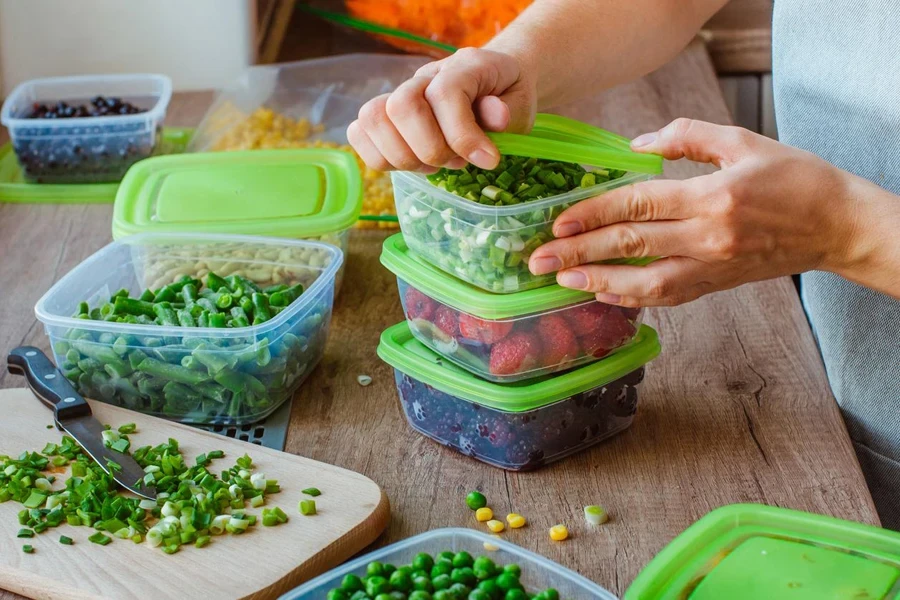
Size, shape, and usability considerations
Equally important in the selection process are the size, shape, and usability of food storage containers. These aspects directly influence the container’s functionality, fitting various storage needs and kitchen spaces. Size diversity allows for the accommodation of both bulk items and smaller portions, ensuring that there is an appropriate container for every food type. From large bins for staples like flour and rice to small containers for herbs and spices, having a range of sizes at disposal simplifies organization and maximizes space efficiency.
The shape of containers also plays a crucial role in optimizing storage. Rectangular or square containers tend to make better use of shelf space compared to round ones, allowing for a more organized and accessible setup. However, the choice of shape may also depend on the specific storage environment and personal preference.
Usability extends beyond size and shape, encompassing the ease of opening and closing containers, clarity of material for quick identification of contents, and stackability for efficient space utilization. Containers designed with user-friendly features such as clear labeling options, ergonomic lids, and modular stacking capabilities significantly enhance the practicality and convenience of food storage, making them a preferred choice for professionals seeking to maintain orderly and efficient kitchen operations.
4. Leading food storage models of 2024: an overview
As the market for food storage solutions continues to evolve in 2024, a diverse array of models stands out, catering to the varied demands of maintaining food freshness and optimizing kitchen organization. This segment delves into the leading food storage models of the year, spotlighting top glass container sets and premier plastic options, alongside innovative materials that have captured the attention of industry professionals.
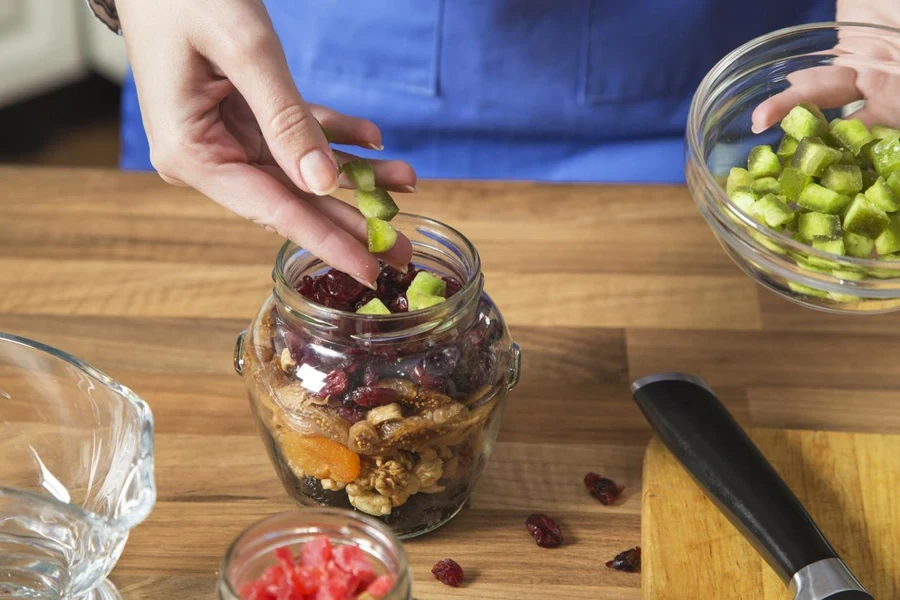
Top glass container sets
Glass container sets remain a staple in the realm of food storage for their enduring quality and multifunctional use. Among the standout sets, Glasslock’s 18-piece storage set has garnered acclaim for its robust construction and comprehensive range of sizes, catering to both small and large storage needs. These containers distinguish themselves with their airtight seals, ensuring food stays fresh longer, whether in the pantry, refrigerator, or freezer. The versatility of Glasslock containers, safe for use in the microwave, dishwasher, and even oven (lids aside), underscores their appeal. Notably, their resistance to stains and odors positions them as a preferred choice for those seeking long-term, reliable food storage solutions.
Another notable mention is the Pyrex Simply Store 18-Piece Glass Food Storage Container Set. Revered for its tempered glass composition, this set offers exceptional durability and is designed to withstand rapid temperature changes. The ease of cleaning, coupled with the variety of sizes included, makes the Pyrex set a practical option for a wide range of food storage applications, from leftovers to bulk pantry items.
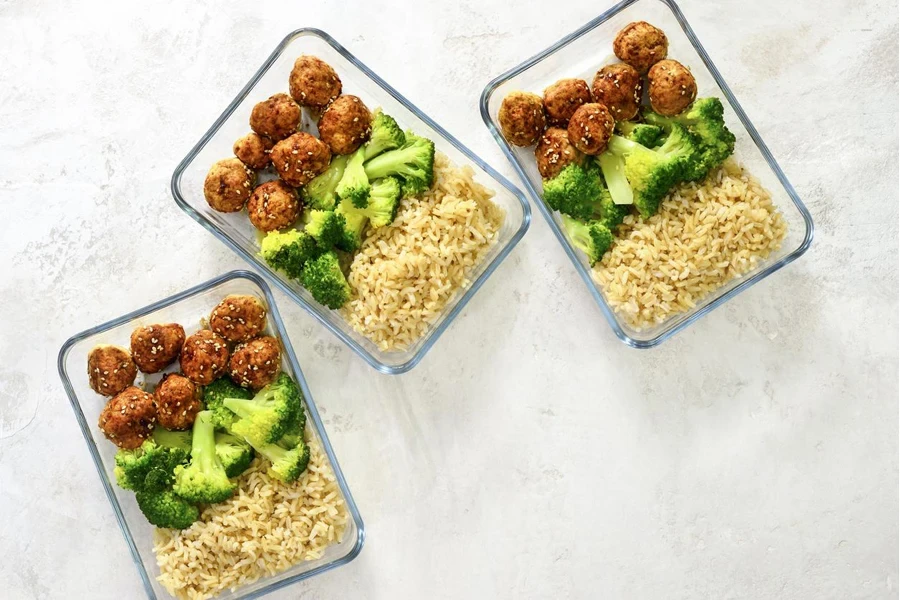
Premier plastic options and beyond
In the plastic segment, the Rubbermaid Brilliance 20-Piece Food Storage Set emerges as a frontrunner, boasting a clear, shatterproof design and an array of features that enhance usability. The set’s Tritan plastic construction not only offers a crystal-clear view of contents but also ensures durability and resistance to stains and odors. The airtight lids equipped with rubber gaskets and secure latches make these containers leakproof, a critical feature for transporting meals or storing liquids. The inclusion of microwave-safe capabilities further elevates the Rubbermaid Brilliance set as a versatile and convenient choice for both storage and reheating.
Beyond traditional materials, the market has seen a rise in containers made from alternative, eco-friendly materials. Silicone food storage options have gained traction for their flexibility, temperature resistance, and collapsible designs that save space when not in use. These containers are celebrated for their environmental benefits, being reusable and, in many cases, made from food-grade, non-toxic materials. Silicone’s inert nature means it does not react with food or harbor odors, making it an excellent choice for a variety of storage needs.
Conclusion
The selection of food storage containers in 2024 is a nuanced decision that hinges on the equilibrium between functionality, environmental stewardship, and adherence to market trends. This analysis underscores the importance of considering durability, safety, and the practicality of containers, alongside a growing preference for sustainable materials that align with eco-friendly practices. As the industry continues to innovate, these guiding principles ensure that the choices made not only enhance kitchen efficiency but also contribute positively to the broader environmental landscape, meeting the evolving demands of consumers and professionals alike.
